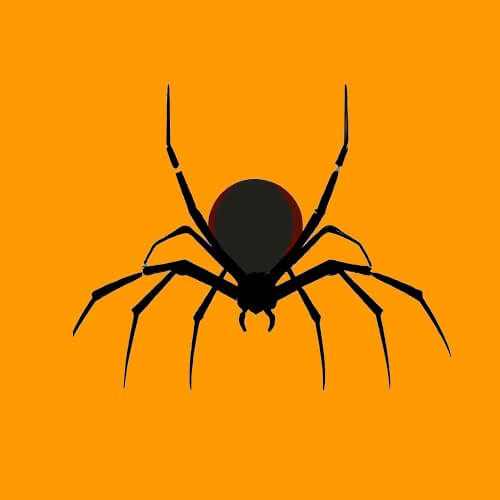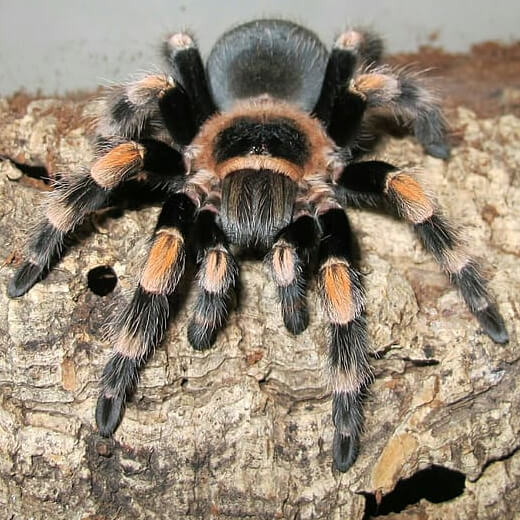



Spiders are invertibrate bugs, or arthropods, belonging to the class Arachnida, which also includes scorpions, ticks, and mites. They are ancient creatures that have been around for millions of years and have evolved into a diverse group of organisms.
There are approximately 48,000 known species of spiders, and entomologists believe that there may be many more yet to be discovered and classified.
Spiders have distinct characteristics that set them apart from other arthropods. They have two main body regions: the cephalothorax (a fused head and thorax) and the abdomen. Unlike insects, spiders have four pairs of legs, giving them a total of eight legs. They also have specialized appendages called chelicerae, which they use to inject venom into their prey. Most spiders have multiple pairs of eyes, although the number and arrangement of eyes can vary between species.
Spiders exhibit an incredible range of shapes, sizes, and behaviors. From the tiny jumping spiders that are barely visible to the naked eye, to the impressive tarantulas with their large, hairy bodies, spiders display remarkable adaptations to their environments. Many spiders are skilled weavers and create intricate silk webs to catch their prey, while others are active hunters that rely on speed and agility to capture food.
One of the most remarkable features of many spiders is their ability to produce silk. Spider silk is a strong, flexible, and lightweight material that is proportionally stronger than even metals like steel.
Spiders use silk for various purposes, such as building webs, creating egg sacs, and constructing retreats. The intricate designs and patterns of spider webs are not only marvels of natural engineering but also serve as effective traps for capturing insects and other small animals.
Spiders are primarily carnivorous and feed on a wide range of prey, including insects, other spiders, and even small vertebrates. They play an important role in controlling populations of pests and maintaining the balance of ecosystems. Spiders employ a variety of hunting techniques, such as ambushing, stalking, or using their silk to catch unsuspecting prey. Their venomous bites paralyze or kill their victims, allowing the spiders to feed when they want.
Spiders inhabit virtually every terrestrial habitat on Earth, except for extreme environments like Antarctica. They can be found in forests, grasslands, deserts, caves, and even in human-made structures.
Some species have adapted to live in aquatic environments or have evolved unique mechanisms to survive in harsh conditions. Spiders have evolved an array of behavioral, anatomical, and physiological adaptations that enable them to thrive in diverse habitats and climates.
Like starfish and some lizards, certain spider species have the extraordinary ability to regenerate and regrow lost body parts. Although the regenerated limb may not be an exact replica of the original, it enables the spider to regain mobility and resume its daily activities.
These decoys can resemble larger spiders or objects like leaves. When predators like wasps or birds approach, they may mistake the decoy for a real threat, giving the spider a chance to escape or stay hidden.
Several species of spiders have a special ability called "ballooning" or "kiting" that allows them to float in the air using their silk. When conditions are just right, these spiders release a strand of silk into the air and use it like a mini parachute. The wind catches the silk and carries the spider off, allowing it to travel long distances.
During ballooning, spiders can travel incredible distances and even cross rivers or oceans! They use this amazing skill to explore new areas, find food, and escape from predators.
Spiders have special hairs on their legs called setae that detect vibrations in the air and on the ground. By detecting vibrations, spiders can sense the presence of nearby insects or other creatures, aiding in hunting and capturing prey, as well as detecting potential predators. This is especially beneficial for web-building spiders, allowing them to detect when an insect becomes trapped in their web through the vibrations transmitted along the silk threads.
Scientists have long been fascinated by spider silk and its extraordinary properties. It can withstand incredibly strong forces without breaking and actually has a greater strength-to-weight ratio than steel. Despite its incredible strength, spider silk remains remarkably lightweight and flexible.
Its superior strength and versatility have sparked interest in its potential applications for human use. Researchers study spider silk in the quest to develop stronger materials for various purposes, such as constructing more durable structures or creating innovative fabrics.